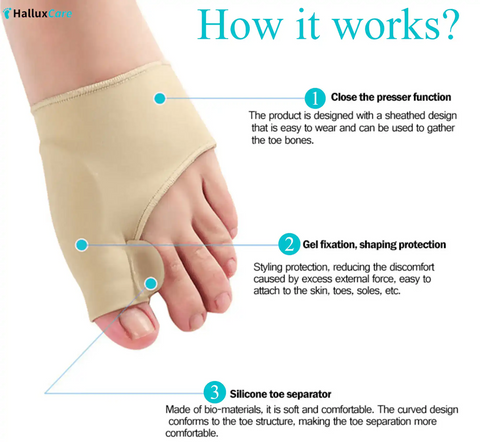Recovering from Foot Fusion and Bunion Surgery: What to Expect (And Why a Dog-Proof Recovery Shoe Might Be Genius)
Recovering from foot fusion and bunion surgery can feel like a marathon, not a sprint. But as one Reddit user’s 8-week post-op update shows, healing is not only possible—it’s often full of small wins that add up to big progress. In this guide, we’ll explore what real recovery looks like, what experts say about the process, and which tools can help make your journey smoother (and safer—especially if you live with dogs!).
✅ Keywords: bunion surgery recovery, foot fusion healing, bunion pain relief
✅ Related terms: fusion surgery recovery, orthopedic bunion support, post-op foot care
A Real Recovery Story: What We Can Learn from a Fellow Patient
A Reddit user recovering from both foot fusion and bunionectomy recently shared their 8-week check-in. Their story reflects the physical and emotional ups and downs many patients experience.
💬 Highlights from the Reddit Post
- ⏳ Timeline Insight: The user reported a “dramatic improvement between weeks 5 and 7,” aligning with clinical timelines for mid-term progress.
- 🚶♀️ Persistent Limp: A lingering limp was noted—common after fusion, especially before full physical therapy.
- 🦶 Double Surgery = Double Challenge: Simultaneous procedures (fusion + bunionectomy) increase complexity and recovery time.
- 🦵 Second Foot Scheduled: Bilateral issues are common, per the American Orthopaedic Foot & Ankle Society (AOFAS), often requiring staged surgeries.
- 🐶 Pet Problems: Their humorous suggestion of a “metal cage” for recovery shoes underscores a real concern—keeping surgical sites safe from paws and playful kids.
---
🔍 Understanding the Recovery Process
🔄 What Is Foot Fusion Surgery?
Foot fusion (arthrodesis) involves permanently joining two or more bones in the foot to eliminate joint movement and reduce pain, often due to arthritis or deformity. According to the American Academy of Orthopaedic Surgeons (AAOS), recovery typically spans:
- 🗓️ 6–12 weeks of limited weight-bearing
- 🦯 Assistive devices like crutches or a knee scooter
- 🧊 Swelling and pain management
- 🧘♂️ Gradual physical therapy to restore balance and strength
“Fusion is a long-term solution for painful joints, but recovery requires patience and dedication,” says Dr. Jane Andersen, DPM, spokesperson for the American Podiatric Medical Association (APMA).
🦶 What to Expect After a Bunionectomy
A bunionectomy removes the bony bump near the big toe and realigns the joint. Recovery includes:
- 🛌 Rest and elevation in the first few weeks
- 👟 Post-op shoes or boots to protect the foot
- ⚡ Mild to moderate pain and swelling for several weeks
- 🧦 Orthotic devices or sleeves for support during walking
Combining a bunionectomy with a fusion procedure extends recovery and increases the need for protective footwear and diligent care.
---
🛒 Must-Have Bunion Recovery Products
Post-operative support tools can significantly ease discomfort and accelerate recovery. These products are designed to align joints, reduce swelling, and protect healing tissues.
4.9 ⭐⭐⭐⭐⭐ ( 1843 reviews )
If you're looking for relief from bunion pain, consider using the Orthopedic Bunion Pain Relief & Correction Sleeve , which provides support and helps to alleviate discomfort.
For additional protection, the Tailor's Bunion Bunionette Pain Relief Protection Sleeves are designed to offer comfort and protection for bunionette pain.
To nourish and soothe the skin around bunions, as well as to promote healthy hair, consider the Jamaica Black Castor Oil Soothing Oil . Known for its moisturizing and anti-inflammatory properties, it helps alleviate discomfort around bunions and supports hair growth and scalp health.
---
🐾 Practical Tips: Protecting Your Foot at Home
If you share your space with pets or kids, post-op foot safety becomes a daily concern. A playful pup can easily bump into your surgical foot, causing pain or even injury.
Real-World Safety Tips:
- 🥾 Use medical-grade recovery boots with toe guards
- 🛑 Create “no-go” zones with baby gates or room dividers
- 🛏️ Keep your foot elevated on a sturdy surface when seated
- 🧦 Always wear protective footwear indoors—even when walking short distances
Some patients even DIY a “toe tent” or makeshift cage around their foot while sleeping or lounging to prevent accidental contact.
---
🗝️ Key Takeaways
- Recovery from foot fusion and bunionectomy is gradual but rewarding, with major improvements often noticed 5–7 weeks post-op.
- Combining surgeries increases healing complexity—follow your surgeon’s timeline closely.
- Swelling, limping, and stiffness are normal but should improve with time and therapy.
- Protective gear and compression tools can support alignment, relieve pain, and prevent setbacks.
- Living with pets? Consider extra layers of protection to avoid bumps or accidental injuries.
---
❓ Frequently Asked Questions
How long does recovery take after foot fusion and bunion surgery?
According to the AAOS, most patients can expect recovery to last 10–12 weeks, though complete healing—including return to regular footwear—may take 3–6 months.
Is it normal to limp after foot fusion?
Yes. A limp is common in the early post-op weeks and often improves with physical therapy, per the AOFAS.
Can I walk my dog during recovery?
Not during the initial non-weight-bearing phase. After your provider clears you for walking, use a boot and keep walks short and controlled.
What kind of footwear should I use after bunion surgery?
Use a post-op shoe or medical boot as directed. As healing progresses, transition to wide, cushioned shoes with orthotic inserts.
---
🗨️ Share Your Experience
Have you had foot surgery? What helped you the most during recovery?
Drop a comment below to share your story or ask questions. Your experience could be the guidance someone else needs.
Let’s support each other—one step at a time. 💬👇
Sources:
- American Academy of Orthopaedic Surgeons (AAOS): orthoinfo.aaos.org
- American Podiatric Medical Association (APMA): www.apma.org
- American Orthopaedic Foot & Ankle Society (AOFAS): www.aofas.org




